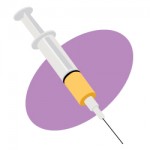What is Flexor Hallucis Longus Tendinopathy?
The Flexor Hallucis Longus muscle is located in the lower leg, and attaches to the Flexor Hallucis Longus tendon. This tendon runs from the outside of the ankle, down the side of the foot. When the Flexor Hallucis Longus muscle becomes damaged from overuse, this also impacts the Flexor Hallucis Longus tendon, causing it to become inflamed, resulting in tendinopathy.
Flexor Hallucis Longus Tendinopathy is also referred to as Flexor Hallucis Longus Tendonitis and Dancer’s Tendonitis.
 Causes
Causes
Flexor Hallucis Longus Tendinopathy is common among ballet dancers, because of the involvement of the Flexor Hallucis Longus muscle and tendon when a ballet dancer goes “en pointe” (stands on their toes). This is called plantar flexion. The other role of the Flexor Hallucis Longus muscle and tendon is bending the big toe.
Signs & Symptoms
Signs and symptoms of Flexor Hallucis Longus Tendinopathy include:
- A gradual onset of pain
- Swelling in the ankle and foot
- Tenderness in the affected area
- Reduced range of motion
- Symptoms that get worse over time
Treatment
RICE
Rest, Ice, Compression and Elevation are very effective steps to take when treating a case of Flexor Hallucis Longus Tendinopathy. Resting your ankle will help you avoid doing any further damage to the muscle. Ice and Compression should be applied to the ankle at the same time, to bring down the swelling and relieve the pain. Elevating your ankle above your heart with a pillow will work to control the inflammation. In order to get the best coverage and compression possible, we recommend using a cold wrap that is specially designed for the ankle. This will also be much more comfortable than using a bag of ice or frozen peas.
Non-steroidal anti-inflammatory drugs (NSAIDs) like Advil and Aleve can be taken during times of rest to help alleviate your pain and inflammation. Make sure you limit painkillers to times of rest, like before you go to bed at night, to avoid re-injury. Taking painkillers during the day can be dangerous, because they completely block the pain signal, making you unaware of any further damage you may be doing to the soft tissue.
Immobilization
A cast or brace can be worn to help you avoid bearing weight on the injured ankle. This may be required if you can’t do a lot of resting, as it will help you avoid re-injury. However, you will need to use crutches to help you get around while wearing a cast or brace.
Physiotherapy
A physiotherapy program can help to restore strength and full range of motion to the ankle once you are far enough along in the healing process. Exercises should not be attempted until you have completed at least 4-6 weeks of conservative treatment. If physiotherapy is painful, don’t do it. This is a sign that it’s still too early in the healing process to start doing exercises.
Cortisone can be injected into the affected area to temporarily relieve pain and swelling, however, this will not do anything to heal your soft tissue damage. Cortisone shots also come with various risks and side effects that should be considered.
Surgery
Surgery for Flexor Hallucis Longus Tendinopathy should only be considered as a last resort. If you have tried conservative treatments but haven’t experienced any improvement after 6 months, talk to your doctor about surgery.

